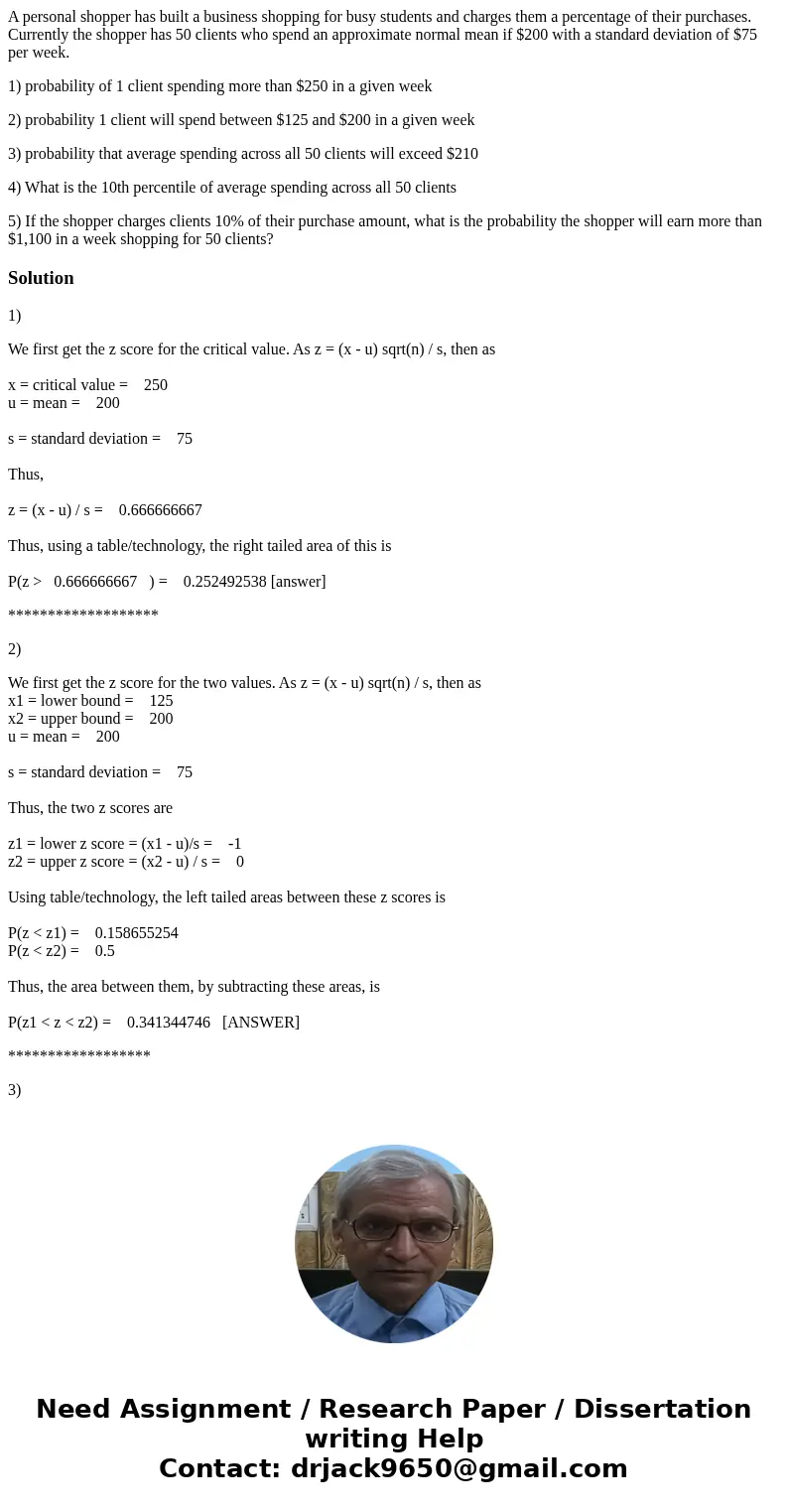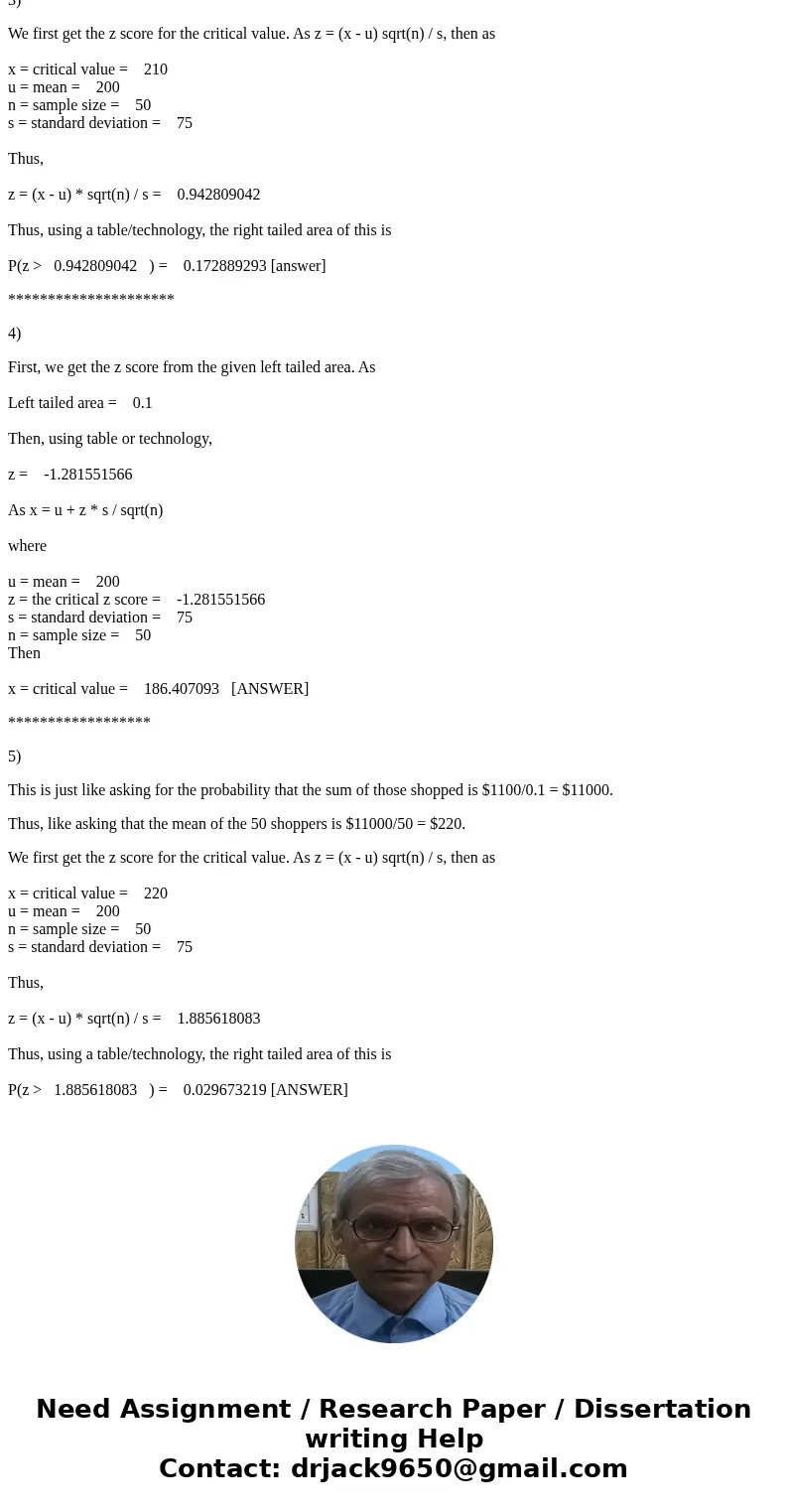A personal shopper has built a business shopping for busy st
A personal shopper has built a business shopping for busy students and charges them a percentage of their purchases. Currently the shopper has 50 clients who spend an approximate normal mean if $200 with a standard deviation of $75 per week.
1) probability of 1 client spending more than $250 in a given week
2) probability 1 client will spend between $125 and $200 in a given week
3) probability that average spending across all 50 clients will exceed $210
4) What is the 10th percentile of average spending across all 50 clients
5) If the shopper charges clients 10% of their purchase amount, what is the probability the shopper will earn more than $1,100 in a week shopping for 50 clients?
Solution
1)
We first get the z score for the critical value. As z = (x - u) sqrt(n) / s, then as
x = critical value = 250
u = mean = 200
s = standard deviation = 75
Thus,
z = (x - u) / s = 0.666666667
Thus, using a table/technology, the right tailed area of this is
P(z > 0.666666667 ) = 0.252492538 [answer]
*******************
2)
We first get the z score for the two values. As z = (x - u) sqrt(n) / s, then as
x1 = lower bound = 125
x2 = upper bound = 200
u = mean = 200
s = standard deviation = 75
Thus, the two z scores are
z1 = lower z score = (x1 - u)/s = -1
z2 = upper z score = (x2 - u) / s = 0
Using table/technology, the left tailed areas between these z scores is
P(z < z1) = 0.158655254
P(z < z2) = 0.5
Thus, the area between them, by subtracting these areas, is
P(z1 < z < z2) = 0.341344746 [ANSWER]
******************
3)
We first get the z score for the critical value. As z = (x - u) sqrt(n) / s, then as
x = critical value = 210
u = mean = 200
n = sample size = 50
s = standard deviation = 75
Thus,
z = (x - u) * sqrt(n) / s = 0.942809042
Thus, using a table/technology, the right tailed area of this is
P(z > 0.942809042 ) = 0.172889293 [answer]
*********************
4)
First, we get the z score from the given left tailed area. As
Left tailed area = 0.1
Then, using table or technology,
z = -1.281551566
As x = u + z * s / sqrt(n)
where
u = mean = 200
z = the critical z score = -1.281551566
s = standard deviation = 75
n = sample size = 50
Then
x = critical value = 186.407093 [ANSWER]
******************
5)
This is just like asking for the probability that the sum of those shopped is $1100/0.1 = $11000.
Thus, like asking that the mean of the 50 shoppers is $11000/50 = $220.
We first get the z score for the critical value. As z = (x - u) sqrt(n) / s, then as
x = critical value = 220
u = mean = 200
n = sample size = 50
s = standard deviation = 75
Thus,
z = (x - u) * sqrt(n) / s = 1.885618083
Thus, using a table/technology, the right tailed area of this is
P(z > 1.885618083 ) = 0.029673219 [ANSWER]


 Homework Sourse
Homework Sourse